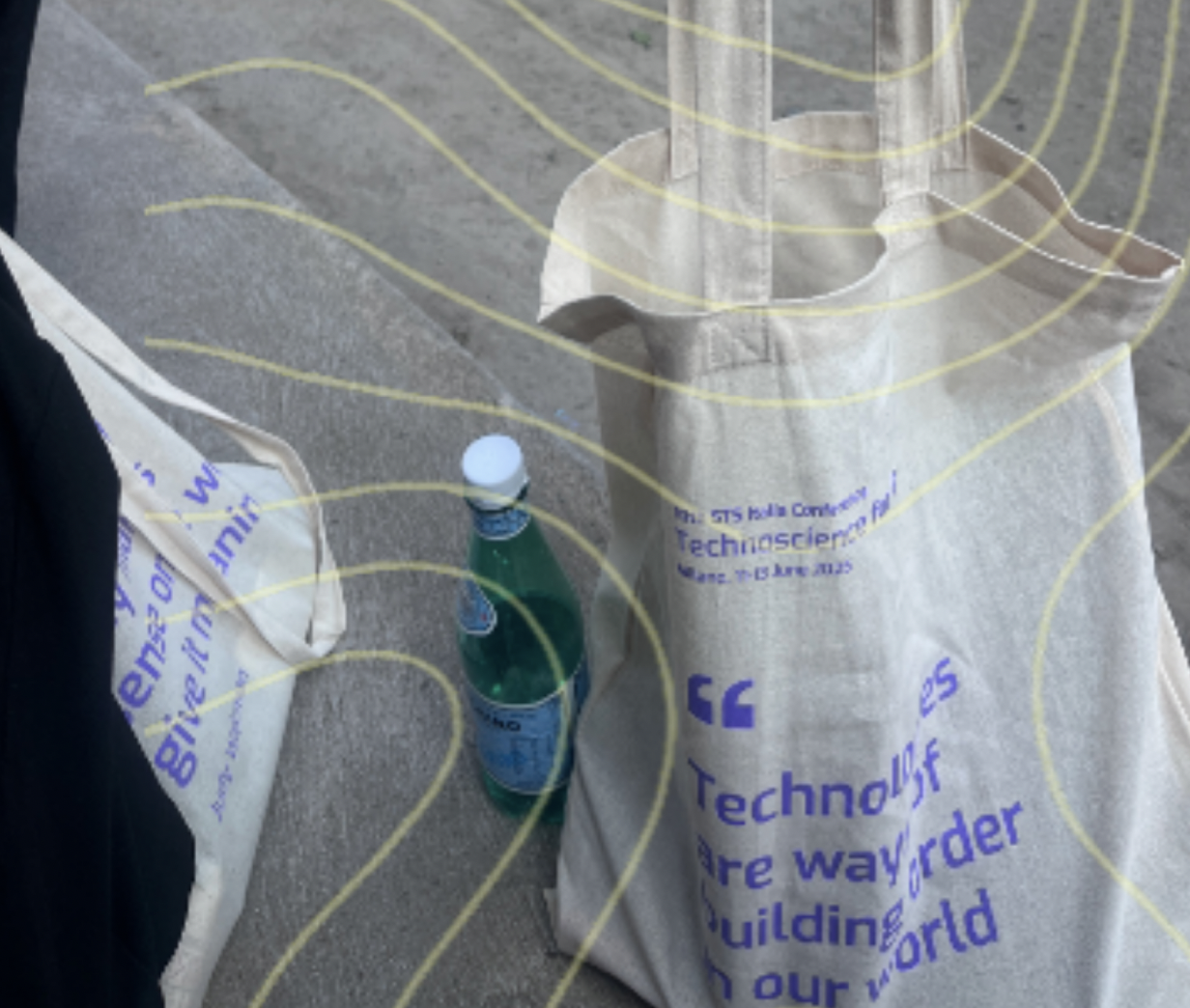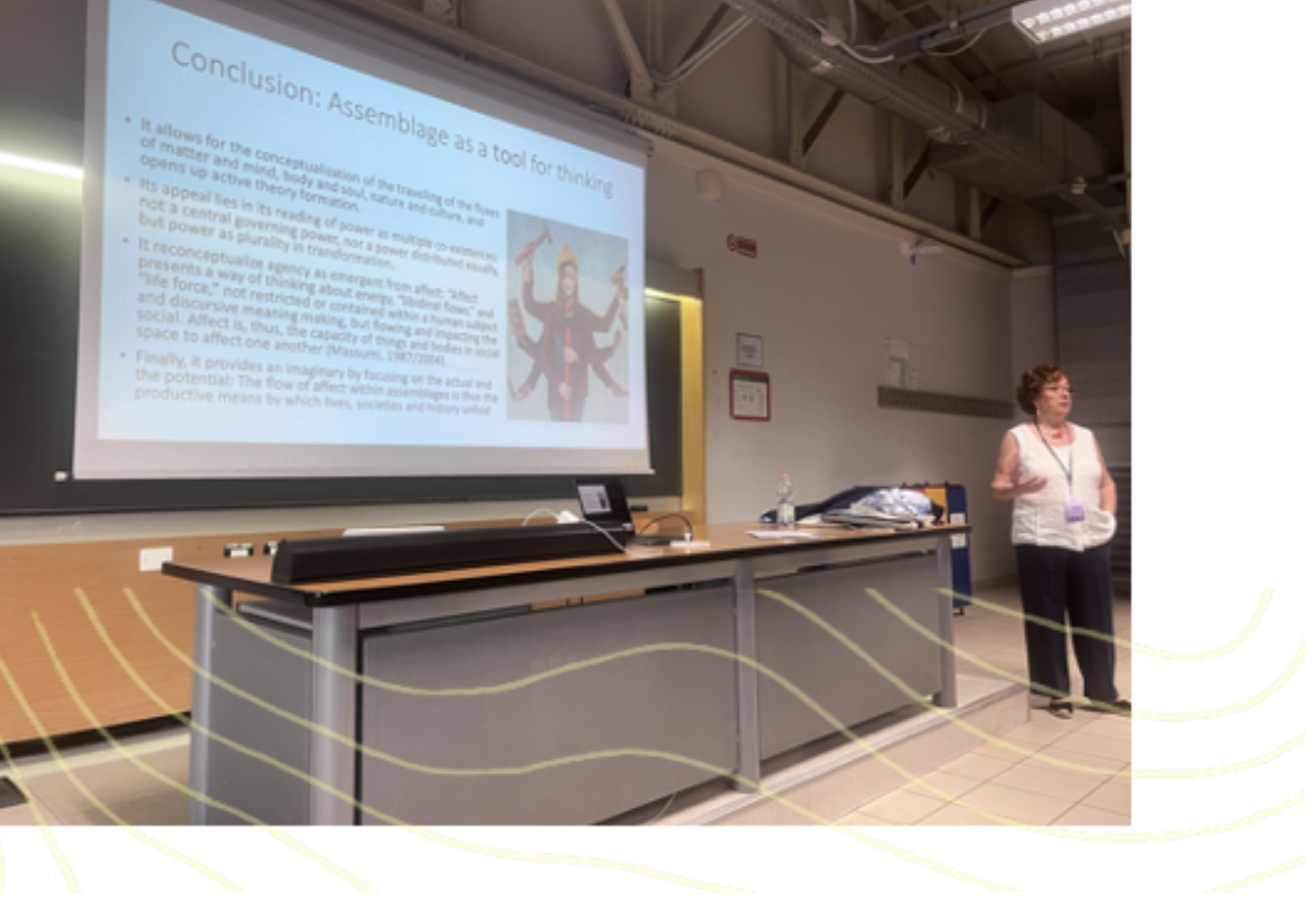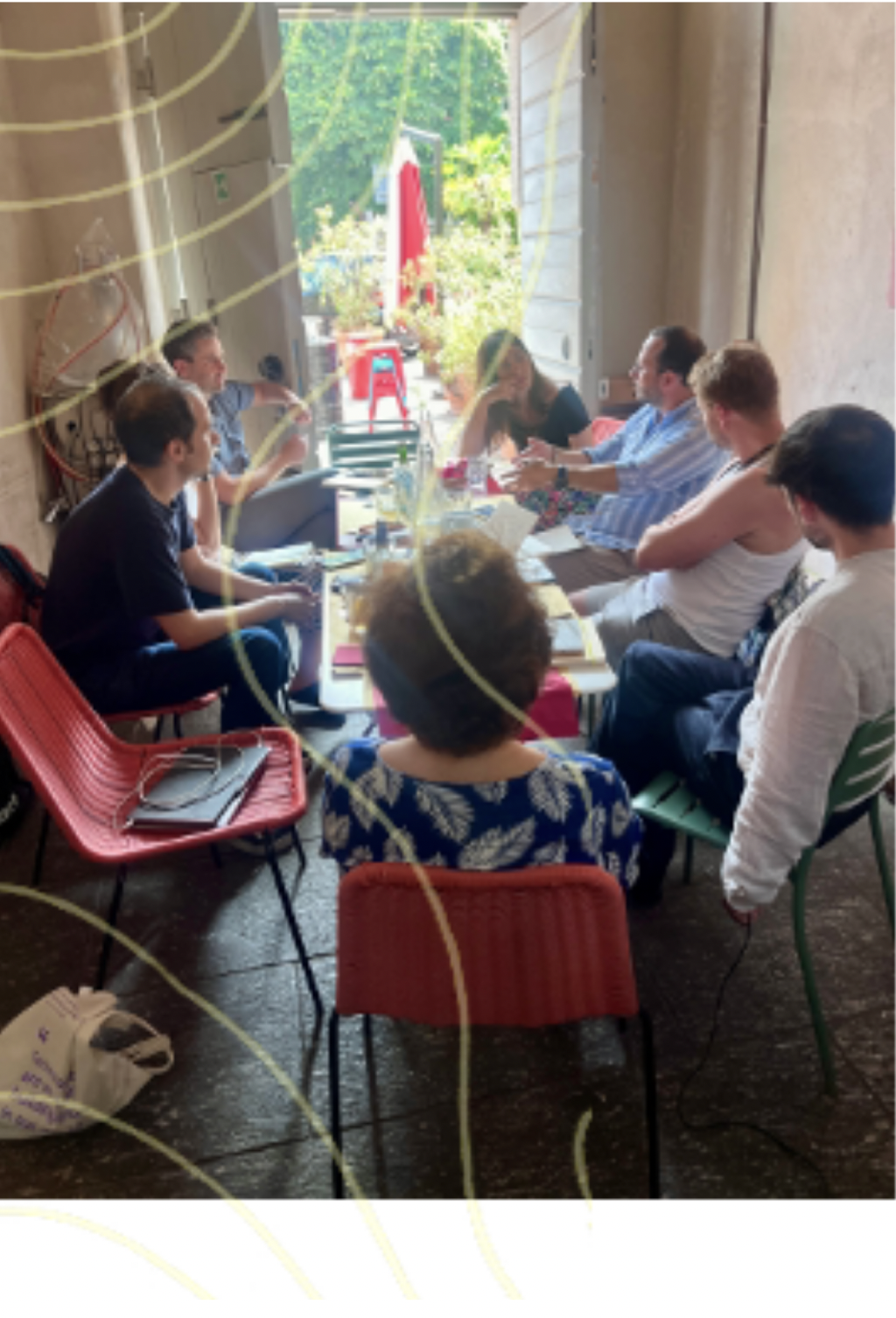Assemblage Thinking for Studying Digital Artifacts: Promises and Challenges
Authors: Lilo Meier (European University Viadrina in Frankfurt, Oder), Kévin Carillon (Université catholique de Louvain), François Lambotte (Université catholique de Louvain), Silvia Gherardi (University of Trento)Editor: Ludovico Rella (University of Durham)
September 8, 2025 | Report-Backs

Assemblage Thinking for Studying Digital Artifacts: Promises and Challenges
A report from the panel “Navigating the Grey: Assemblage Thinking and Digital Artifacts” – 10th STS Italia Conference, “Technoscience for Good,” Milano, 11–13 June 2025What are we left with if nothing is stable, little is certain, and everything is moving – territorializing and deterritorializing? This sense of flux framed our conversation during the panel “Navigating the Grey” at the 10th STS Italia Conference in Milan. Together, we set out to collectively reflect on the promises, limitations, and challenges of assemblage thinking when applied to digital artifacts.
Rooted in the work of Deleuze and Guattari (1987), assemblage thinking highlights the interconnected, heterogeneous, and emergent nature of phenomena. Since then, various scholars have investigated and attempted to systemize and mobilize assemblages as a theoretical lens (e.g., Anderson et al., 2012; Buchanan, 2020; Collier, 2006; DeLanda 2006; Müller, 2016). In recent years, it has gained traction in Science and Technology Studies (STS), particularly in the examination of big data (Aradau et al., 2015; Kitchin et al., 2025), algorithms (Ananny & Crawford, 2018; Glaser et al., 2021; Kitchin, 2014; Valadao, 2024) and artificial intelligence (Hung, 2024) collectively referred to here as digital artifacts. Such a lens allows for conceptualizing digital artifacts, rather than fixed or isolated, but as complex assemblages evolving across time and space (see Hyysalo et al., 2019, Glaser et al., 2021). In doing so, assemblage thinking provides a fruitful starting point to examine the broader ethico-political assemblages in which these artifacts are embedded.
Rather than offering answers, this short piece traces the questions of terminology, power, and control that surfaced as we explored how assemblage thinking might illuminate the promises and challenges of digital artifacts.
Unsettling Terminologies

(Silvia Gherardi opening the panel)
In her opening remarks, Silvia Gherardi (University of Trento) showed us that when it comes to assemblage thinking, little is certain – and even less is fixed. She did so by deterritorializing, thus, breaking down established structures or meanings (Deleuze & Guattari, 1987), the terms we had chosen for our panel, and territorializing our terminologies again. In her presentation, Silvia guided us through the web of different terms that accompany assemblage thinking and scholarship more broadly. She highlighted the difficulties of translation, noting that “assemblage” risks flattening the richer sense of agencement in Deleuze and Guattari’s work. According to Silvia, while DeLanda’s assemblage theory seeks to systematize what resists full systematization – treating assemblages as entities within a realist ontology – other strands emphasize assemblage thinking as a way of tracing emergence and heterogeneity. Furthermore, she critically distinguished between an understanding of connection, and that of entanglement. In that spirit, Silvia proposed understanding assemblages, instead of connected entities, but as generative entanglements and “a form of content (actions, bodies and things) and a form of expression (affects, words and ideas)” (Buchanan 2015, p. 390). This terminological uncertainty ran like a red thread through the sessions, situating us within a multiplicity of terms – more an “uneven topography” (Bennett, 2005, p. 445) than a shared vocabulary of a unitary school of thought. Across the presentations, scholars drew on different elements from the toolbox of assemblage thinking, ranging from technological affordances to the concept of desire.
Violence, Control, Surveillance: What Assemblage Thinking Makes Visible
Most of the works made efforts (sometimes explicit, at other times lingering in the background) to mobilize assemblage thinking to describe power and control differentials. Panelists asked: How and why does power emerge within certain assemblages? How is control enacted, and how power is sustained and what potentialities lie beneath those dynamics?Roger von Laufenberg and Michaela Scheriau (Vienna Centre for Societal Security) presented on assemblages of security for public gatherings, arguing that safety and security assemblages at such events also produce hostile environments with exclusionary characteristics. Drawing on the case of the infamous Perchtenlauf (traditional winter folk procession from the Alpine regions of Austria, southern Germany, and parts of Switzerland) in Austria, they demonstrated how the performance of violence, security technologies, and surveillance are interwoven in affective assemblages of control, and how the desire for safety can give rise to exclusionary movements.
From here, Koen Borghys (Vrije Universiteit Brussel) shifted the focus to the politics of dashboards. The presentation examined how dashboards shape the localization of the Sustainable Development Goals (SDGs) in the Brussels-Capital Region (BCR). His presentation drew attention to how dashboards, as sociotechnical artifacts, shape, reinforce, and challenge dominant understandings of sustainable development. Here, the dashboard can be read as a site where understandings are temporarily stabilized, making visible how governance is enacted.
In a related register, Mace Ojala (Ruhr-University Bochum) meticulously excavated the constitutive forces of a PDF to reassemble its meaning. As the presentation showed, a PDF is more than just a file type – it reveals dynamics of power within the seemingly mundane. Ojala’s work invited us to ask what holds such assemblages together, and how might they be disrupted or reconfigured.
Ismini Mathioudaki (Scuola Normale Superiore) extended this interrogation of boundaries and infrastructures by disassembling the digital border. The scholar took us on a journey to understand borders not as stable concepts but as fluid, multidimensional, and emergent phenomena shaped by the complex interplay of heterogeneous spatialities, temporalities, and materialities. Assemblage thinking here helps capture borders as ongoing accomplishments and directs attention to the material practices that hold them in place.
Lastly, Davide Tanto (Università degli Studi di Milano-Bicocca) proposed a rethinking of digital platforms as assemblages, emphasizing their emergent nature. Such an understanding could foreground platforms as sites of constant negotiation, temporarily stabilized, but never fully stable.
However, to productively expose power, control, and violence, and to move beyond mere descriptions of inequality, we concluded from these diverse cases that we must collectively attend to the movements, waves, and ruptures that sustain, fuel, disrupt, or weaken assemblages of violence, control, and surveillance.
Assemblages in Motion: How Assemblages Emerge, Persist, Transform, and Unravel

(Post-conference exchanges between participants)
While many of the presentations brought to light dimensions of violence, control, or surveillance, the discussions that followed emphasized the importance of studying assemblages not only as snapshots, but over time through movements, transformations, and reconfigurations. Accordingly, power is not anymore a central governing force but” multiple co-existences” - “plurality in transformation” (McFarlane, 2009, p. 562).
This would mean attending to dashboards as sites of negotiation that bring together indicators, institutions, and publics; to PDFs as infrastructures that govern what can be seen and shared; to borders as emergent accomplishments continually made and unmade; to platforms as shifting constellations whose configuration is never final and to public-event security as assemblages where affect, performance, and surveillance condense into exclusion.
To deepen our engagement with these themes, we must move beyond static understandings and attend instead to the shifts, the flows, and the processes of change. Following the dynamics of assemblages means paying attention to how they come together, how they manage to hold, how they shift into something new, and how they eventually unravel. Assemblages are never static. They are always in motion, always in the process of becoming.
Moreover, we believe that understanding dynamics of power requires attention to what holds these assemblages together, what constitutes the multiplicity of power. In this line of thought, we believe that we must attend to affect within assemblages, as productive forces by which power unfolds.
Conclusion
In this short piece, we do not claim to provide definite answers but to explore the new questions raised in Milan. In this spirit, we also cannot end with a definite conclusion. What we propose – or rather hope for – is a research agenda that Silvia termed “a posthumanist assemblage (agencement) theory, a relational onto-epistemology, against dualism, humanism, anthropocentrism”. Such an agenda does not settle with simple answers, nor definitive endings or claims, but promises, and the possibility of building an active community around these questions. In this sense, we propose following Deleuze and Guattari’s playful call: “Make rhizomes, not roots… Don’t sow, grow offshoots… Be multiplicities! Run lines, never plot a point!” (p. 27). Their words invite us to think differently of digital artifacts, not in terms of fixed categories or neat divisions, but in terms of open-ended growth, branching connections, and constant movement.
Published: 09/08/2025
